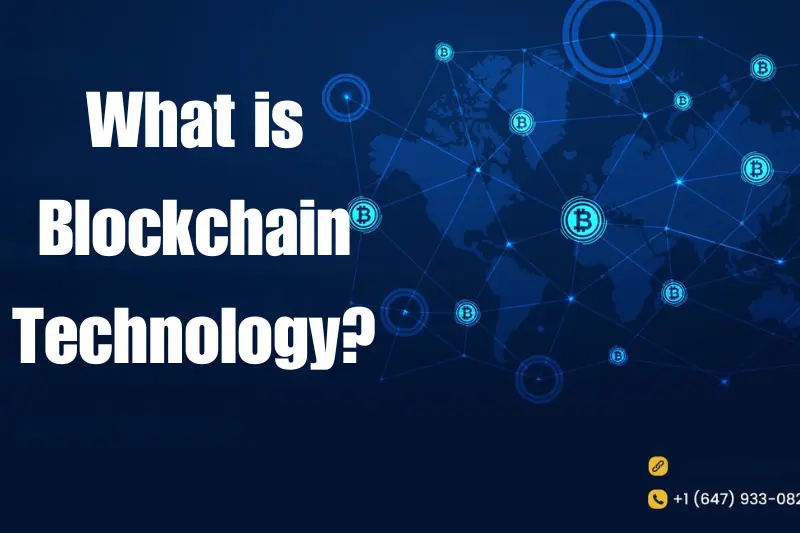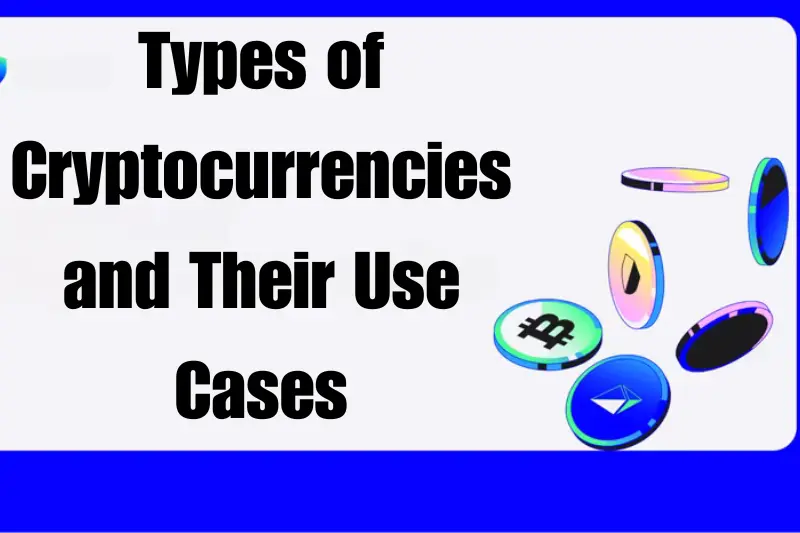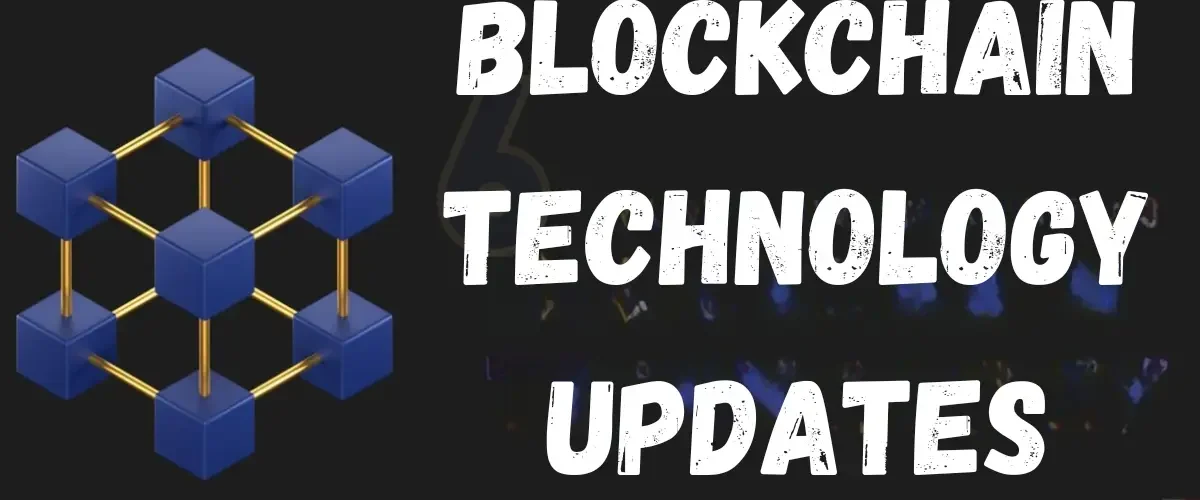Blockchain technology has come a long way from its early days as the foundation of cryptocurrencies. Today, it’s transforming industries like finance, healthcare, supply chain, and even voting systems. With constant innovations and growing adoption, blockchain is set to play a crucial role in shaping the future of digital transactions and security.
In this article, we’ll dive deep into the latest blockchain technology updates in 2025, explore its applications, and discuss the challenges and future trends. Let’s break it down in a simple and engaging way!
What is Blockchain Technology?

At its core, blockchain is a decentralized digital ledger that records transactions securely and transparently. Unlike traditional databases, where information is stored in a central location, blockchain distributes data across a network of computers, known as nodes.
Here’s how it works:
- Blocks: Each transaction is recorded in a “block.”
- Chain: These blocks are linked together in chronological order, forming a chain.
- Decentralization: Instead of being controlled by a single authority, blockchain operates on a peer-to-peer network, making it secure, transparent, and tamper-proof.
Because of these features, blockchain is highly trusted in financial transactions, supply chain management, smart contracts, and digital identity verification.
You may also like to read this:
Latest Crypto News: North Korea’s Bitcoin & SEC Crackdown
Top 9 Cryptocurrency Market Trends In 2025: Key Insights
Bitcoin Price Updates: Will BTC Reach $1M By 2030?
9 Best Crypto Investment Tips For Safe & Smart Trading
Latest Blockchain Technology Updates in 2025
1. Layer 2 Scaling Solutions for Faster Transactions
One of the biggest challenges of blockchain has been scalability—handling thousands of transactions per second without high fees or slow speeds.
In 2025, Layer 2 scaling solutions like Rollups, Sidechains, and State Channels are addressing these issues:
- Ethereum’s Zero-Knowledge Rollups (ZK-Rollups) significantly reduce transaction fees and improve processing speed.
- Bitcoin’s Lightning Network allows instant transactions with near-zero fees, making it more practical for daily use.
- Polygon and Arbitrum are gaining popularity as Ethereum Layer 2 solutions, enabling smoother and faster blockchain operations.
These advancements make blockchain more efficient and accessible for both businesses and individual users.
2. Growing Enterprise Adoption of Blockchain
More companies are integrating blockchain into their operations for security, transparency, and automation. Some key industries leading the way include:
Finance & Banking
- Banks are using blockchain for cross-border payments, cutting transaction times from days to seconds.
- DeFi (Decentralized Finance) platforms are offering peer-to-peer lending, staking, and trading without intermediaries.
Healthcare
- Blockchain is ensuring secure and tamper-proof medical records, allowing patients to control their data while ensuring privacy.
- Hospitals and pharma companies are using blockchain to track medicine supply chains, preventing counterfeit drugs.
Supply Chain & Logistics
- Companies like Walmart and IBM are using blockchain to track product movement, reducing fraud and enhancing efficiency.
- Blockchain-based smart contracts automate transactions, ensuring trust between suppliers and buyers.
3. AI and Blockchain Integration
The combination of Artificial Intelligence (AI) and blockchain is one of the most groundbreaking trends in 2025. Here’s how AI is enhancing blockchain technology:
- AI-powered Smart Contracts – Contracts that self-execute based on real-time AI analysis, making automation more efficient.
- Fraud Detection & Security – AI helps identify suspicious blockchain activities, reducing the risk of cyber attacks.
- Decentralized AI Marketplaces – AI-generated data is being secured on blockchain networks, ensuring transparency and data integrity.
With these innovations, AI and blockchain together are transforming the way businesses handle data security and automation.
4. Central Bank Digital Currencies (CBDCs) are Taking Over
Governments worldwide are launching Central Bank Digital Currencies (CBDCs), which run on blockchain-based infrastructure.
- The U.S. Digital Dollar and EU’s Digital Euro are now in pilot stages, allowing fast and secure digital transactions.
- China’s Digital Yuan is expanding, with more businesses accepting it for daily payments.
- Unlike cryptocurrencies, CBDCs are government-regulated, ensuring stability while reducing dependence on cash.
However, some people are concerned about financial privacy, as governments may have more control over digital transactions.
5. Sustainable and Eco-Friendly Blockchain Solutions
One major criticism of blockchain has been its high energy consumption, especially for networks like Bitcoin that use Proof of Work (PoW).
In 2025, blockchain is becoming more eco-friendly with these advancements:
- Ethereum’s transition to Proof of Stake (PoS) reduced energy usage by 99%, making it a greener alternative.
- New blockchains like Algorand and Cardano use energy-efficient consensus mechanisms, minimizing environmental impact.
- More projects are focusing on carbon-neutral and renewable energy-based mining solutions.
With these improvements, blockchain is becoming more sustainable and widely accepted across industries.
Types of Cryptocurrencies and Their Use Cases

While Bitcoin is the most well-known cryptocurrency, there are thousands of others, each with unique use cases. Here’s a quick breakdown:
1. Payment Cryptocurrencies
- Bitcoin (BTC) – The first and most popular cryptocurrency, used for payments and as a store of value.
- Litecoin (LTC) – Faster transaction speeds and lower fees than Bitcoin.
2. Smart Contract Platforms
- Ethereum (ETH) – The leading blockchain for decentralized apps (dApps) and smart contracts.
- Solana (SOL) – A high-speed blockchain known for its low transaction costs.
3. Stablecoins (Price-Stable Cryptos)
- Tether (USDT) – Backed 1:1 by USD, ensuring stability in volatile markets.
- USD Coin (USDC) – A fully regulated stablecoin used for payments and trading.
4. Privacy Coins
- Monero (XMR) – Offers completely anonymous transactions, hiding sender and receiver details.
- Zcash (ZEC) – Allows selective privacy features for users.
5. Utility Tokens
- Binance Coin (BNB) – Used on the Binance exchange for transaction discounts and fees.
- Chainlink (LINK) – Helps smart contracts connect with real-world data.
Future of Blockchain Technology
Despite all its advancements, blockchain still faces challenges:
- Regulatory Uncertainty – Governments are still defining laws and rules for crypto and blockchain adoption.
- Security Risks – While blockchain is secure, hacks and scams remain a risk, especially in DeFi.
- Adoption Barriers – Businesses need technical expertise to integrate blockchain, slowing adoption.
However, as blockchain becomes more scalable, sustainable, and widely accepted, its role in finance, data security, and automation will only continue to grow.
Final Thoughts
Blockchain technology updates in 2025 are driving major transformations across industries, from faster transactions through Layer 2 solutions to enhanced security in sectors like finance and healthcare. Innovations like AI integration, Central Bank Digital Currencies, and eco-friendly blockchain solutions are making the technology more scalable, efficient, and sustainable.
While challenges like regulatory uncertainty and security risks remain, these updates are setting blockchain up for even greater adoption and impact in the future. Blockchain’s continued evolution will be crucial in shaping the future of digital transactions, data security, and automation.
FAQs
1. What is blockchain technology in simple terms?
Blockchain is a digital ledger that records transactions securely and transparently across a network of computers. It’s tamper-proof and decentralized, making it trustworthy.
2. How is blockchain different from traditional databases?
Unlike traditional databases that store information in one place, blockchain is distributed across many computers, preventing fraud and enhancing security.
3. What industries use blockchain technology?
Blockchain is used in finance, healthcare, supply chain, real estate, voting systems, and even entertainment for secure and transparent transactions.
4. Is blockchain secure?
Yes! Blockchain uses advanced encryption and decentralization, making it highly secure against hacking and data manipulation.
5. What are the latest updates in blockchain technology?
Some of the biggest blockchain technology updates in 2025 include Layer 2 scaling solutions, AI integration, CBDCs, and sustainable blockchain networks.



